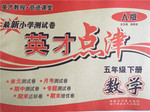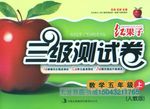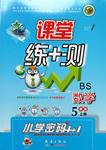题目内容
---How well did John do in the match?
--Wonderful. I think we can’t have a ______ player in our football team.
A. good B. well C. better D. best
C
【解析】略

 英才点津系列答案
英才点津系列答案 红果子三级测试卷系列答案
红果子三级测试卷系列答案 课堂练加测系列答案
课堂练加测系列答案
| |||||||||||||||||||||||||||||||||||||||||||||||||||||||||||
When we see well, we do not think about our eyes very often. It is only when we cannot see perfectly that we realize how important our eyes are.
People who are near-sighted can only see things that are very close to their eyes. Everything else seems blurry. Many people who do a lot of work, such as writing, reading and sewing become near-sighted. People who are far-sighted suffer from just the opposite problem. They can see things that are far away, but they have difficulty in reading a book unless they hold it at arm’s length. If they want to do much reading, they must get glasses, too.
Other people do not see clearly because their eyes are not exactly the right shape. They have what is called astigmatism (散光). This, too, can be corrected by glasses. Some people’s eyes become cloudy because of cataracts (白内障). Long ago these people often became blind. Now, however, it is possible to operate on the cataracts and remove them.
Having two good eyes is important for judging distances. Each eye sees things from a slightly different angle. To prove this to yourself, look at an object out of one eye; then look at the same object out of your other eye. You will find the object’s relation to the background and other things around it has changed. The difference between these two different eye views helps us to judge how far away an object is. People who have only one eye cannot judge distances as people with two eyes.
1.We should take good care of our eyes________. .
|
A.only when we can see well |
|
B.only when we cannot see perfectly |
|
C.even if we can see wel |
|
D.only when we realize how important our eyes are |
2.When things far away seem indistinct(模糊不清) , one is probably________. .
|
A.near-sighted |
B.far-sighted |
|
C.astigmatic |
D.suffering from cataracts |
3.The underlined word blurry in the second paragraph probably means_______.
|
A.obvious |
B.possible |
C.clear |
D.unclear |
4.Having two eyes instead of one is particularly useful for_______
|
A.seeing at night |
B.seeing objects far away |
|
C.looking over a wide area |
D.judging distances |